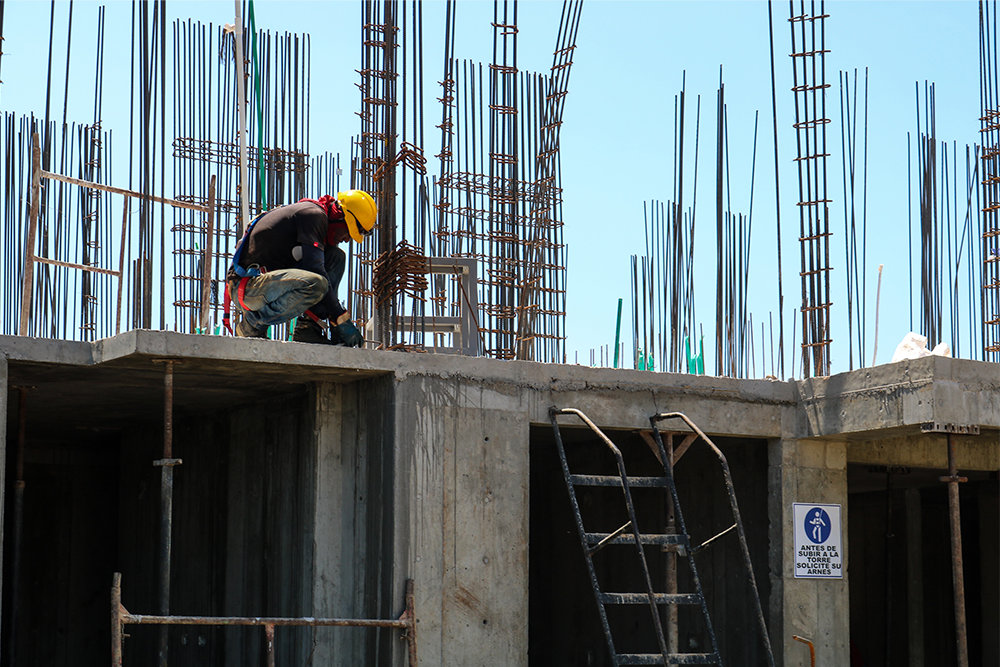‘Friendshoring’ and ‘slowbalisation’: Are high infrastructure costs here to stay?
The world is getting bigger and more expensive. Since the Global Financial Crisis in 2009-10, growth in globalisation indices, a measure of openness to international trade, has been decelerating. Trade wars and the politicisation of trade have become normalised, and 'friendshoring' – the practice of mainly trading with countries that share similar values – is on the rise.
So what does the trend of slowing globalisation mean for infrastructure, a global industry that is best supported by a mobile and highly skilled workforce free to move across countries? Let’s take a look.


Source: World Economic Forum
Reductions in free trade will, all other things being equal, drive up costs and reduce choice. This plays out in the infrastructure sector as higher costs for taxpayers, reduced investment, and less building of socially beneficial infrastructure. In an environment that has seen the infrastructure investment gap more than treble from a 2017 global forecast of $0.7tn a year to around $3tn a year today, this is a significant concern.
Costs and market constraints are hitting the sector hard. In APAC, Infrastructure Australia wrote a 2022 research piece about workforce constraints and market capacity. The Asian Infrastructure Investment Bank (AIIB) set out a series of international forces that are driving economic challenges for the infrastructure sector, including “lingering pandemic, high commodity prices, disrupted energy markets, stressed supply chains, and geopolitical tensions”.
In the United States, Brookings Institution noted that “two infrastructure-specific commodity indexes within the Producer Price Index (PPI) – which count material inputs in the roadway industry and the energy and communications industry – are both up about 25% from January 2021 to December 2022.”
And in Europe, the UK Construction Material Price Indices for ’All Work‘ “saw a 27.2% increase in the 12 months to May 2022, with the greatest price rises being experienced in concrete reinforcing bars (64.9%), fabricated structural steel (52.7%) and particle boards (30.2%)”.
Capital flows are also impacted by friendshoring and slowbalisation, with the IMF finding a marked uptick in Foreign Direct Investment (FDI) flowing to countries that are geopolitically aligned.


Source: IMF
Most analyses conducted so far have focused on describing cost pressures that may result from receding globalisation, with limited analysis so far given to causes. Where they are given, guesses about what is driving cost increases have focused on ‘events’, rather than ‘trends’ – with events in this context being one-off happenings like the war in Ukraine or the COVID-19 pandemic.
Although this is a somewhat artificial separation, given that events do to a degree drive trends, a key implication of focusing on event-driven cost increases is the conclusion that their effects will lessen and eventually disappear, and costs will stabilise. Conversely, trends, such as the trends of receding globalisation and rising friendshoring, may create long-term structural changes to cost bases.
The benefits of free trade were famously popularised by 18th century economists Adam Smith and then David Ricardo, who introduced the notion of comparative advantage. Comparative advantage is a rationale for why free trade is often beneficial to participants (with the caveat that without rules, free trade can be exploitative and unsustainable).
A great deal has been written since then, but it remains an orthodox economic opinion that free international trade, governed by a rules-based order, has been a positive contributor to economic growth and human development. This makes the shift away from free trade and globalisation by countries who previously buttressed this orthodoxy especially noteworthy.
In April 2022, Janet Yellen, Secretary of the US Treasury, presaged a global rise in friendshoring, saying, “We cannot allow countries to use their market position in key raw materials, technologies, or products to have the power to disrupt our economy or exercise unwanted geopolitical leverage. Let’s build on and deepen economic integration and the efficiencies it brings—on terms that work better for American workers”.
However, while friendshoring may serve valid political aims, it is not a costless exercise. The European Bank of Reconstruction and Development (EBRD) recently estimated the global cost of friendshoring at 4.6% of global GDP.
The shift away from globalisation was picked up as the cover theme of the 12 January issue of The Economist, which noted that “mutual benefit is out and national gain is in. An era of zero sum thinking has begun”.
If zero sum thinking on trade continues, the infrastructure sector will bear its share of the costs, and if higher costs are here to stay, the sector will need to start addressing this now. Long-term strategic plans may need to become less ambitious if fewer resources are available to deliver them. The rate of technical innovation in the sector could slow as the highest skilled workers and the best practices become less mobile, thereby reducing productivity and quality gains. Governments can address this by developing better innovation policies and supporting greater uptake of InfraTech and other industry best practice.
Rising costs will also put greater burdens on already constrained public sector budgets. Governments will need to continue to find innovative ways to fund, finance, and derisk infrastructure projects.
While the sector can’t do much to turn the tide, being forewarned is forearmed. A clear-eyed view of the future will help countries to plan and better manage the impact of receding globalisation.

 Funding and Financing Infrastructure
Funding and Financing Infrastructure



